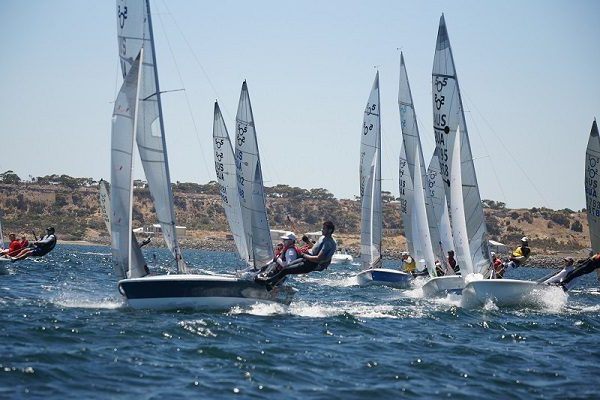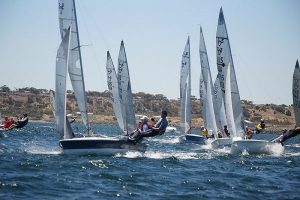

Some Information from Nick Craig’s brilliant book “Helming To Win” distributed by Fernhurst books from their SAIL TO WIN Series. https://www.fernhurstbooks.com
In most classes, boatspeed can be summed up as 5% static settings, 20% dynamic settings and 75% technique. When you hear talk around the boat park prior to leaving to race, nearly every discussion is about the static settings. Let’s talk about each and its effects.
Static Settings –
You set up these settings on shore such as mast rake, rig tension, spreader angle and poke. Some classes do have the ability to alter rake and tensions whilst sailing but these are the exception. In the case of these classes, you need to have marks or gauges that help you get to the correct settings for the right conditions.
For all other boats getting the settings wrong on the day means that you risk being slow. In most classes, class champs or the favoured sailmaker will be able to let you know what the settings are for each set of conditions. The alternative is a ponderous two-boat tuning exercise to get to the fast settings.
In short, it is best to copy the settings of the top boats and then focus on the 95% of things that contribute to boatspeed.
Dynamic Settings
These are settings that you can change on the water. This is where changing gears fits into the boatspeed matrix.
Knowing when and how to implement these is very important. In most boats, the key dynamic levers are sheet tension, boom vang, cunningham, traveller, centreboard position (being rake or depth) and jib car position for those boats with headsails.
Every class is different though so once again, experimentation with two boat tuning and observing or speaking with the class front runners is essential to speed up your racing improvement. Trial and error during racing will lengthen the learning process and add to your frustration.
If you don’t have the luxury of two-boat tuning, you can learn a lot about your boat by experimenting. Start initially with a wide range and adjust one control at a time to see what effect it has.
When experimenting, make this change across a range of conditions because the effect will vary depending on the amount of wind or sea state.
Once you work out what makes your boat quick, keep notes and refer to them regularly until making fast adjustments becomes second nature.
Technique
One of the main reasons that most champions seem to be able to sail fast in any class is a good technique.
Good technique means being able to sail the boat consistently flat and balanced as the wind speed, direction and sea state change with minimal use of the rudder.
To be in the groove your boat needs to be sailed flat. When training, and maintaining a flat boat initially you may find yourself to be slow because you will be concentrating on this rather than the telltales, waves or approaching gusts and lulls. Once sailing flat becomes a habit, it becomes a lifetime skill that will give you an edge over almost everyone in your class.
Tiller movement should match the pattern of the wind and waves on the day. When the waves are short and choppy and the wind is gusty, tiller movement can be more dynamic. If the water is flat and the wind is steady, tiller movements need to be minimal.
In waves, body movement is the key to maintaining the best speed. Most upwind body movement is through moving the upper body, forward and backwards in time with the waves. For really big waves you will need to move your whole body fore and aft matching the size and frequency of the waves.
Effective fore and aft body movement means that you need to steer less around waves which results in more speed and height.

